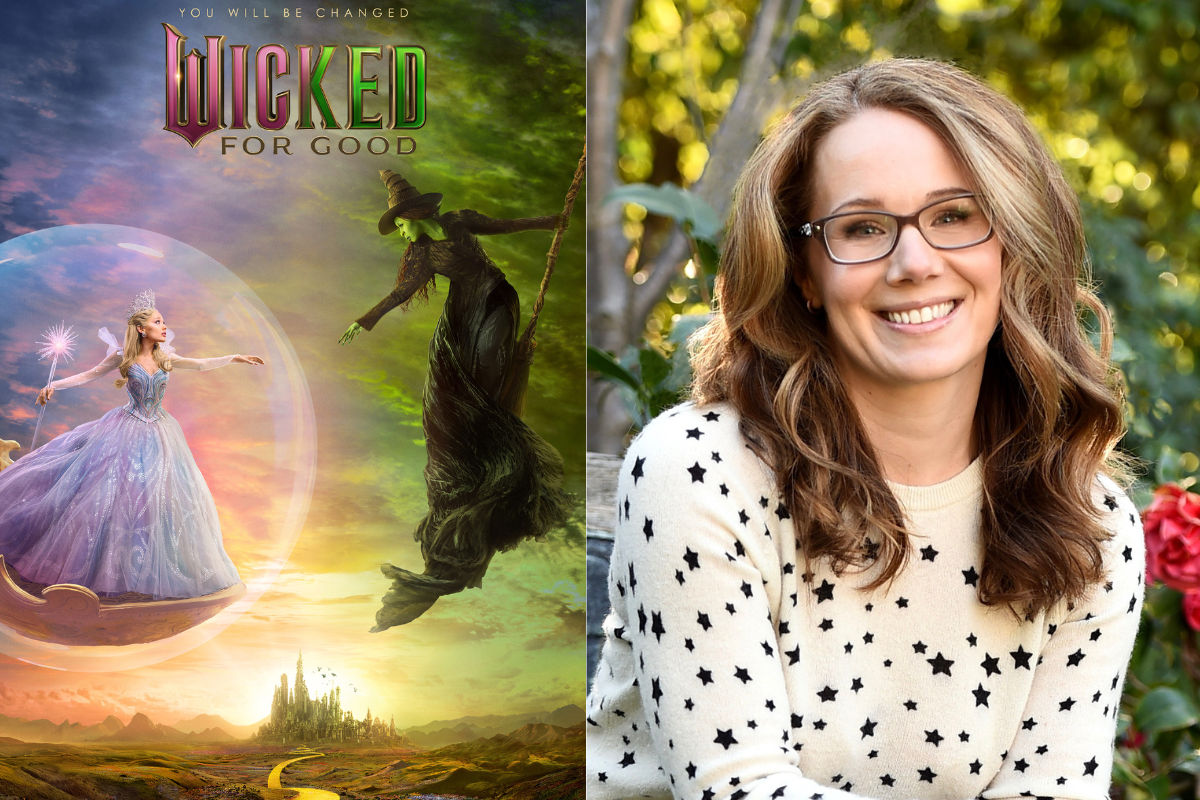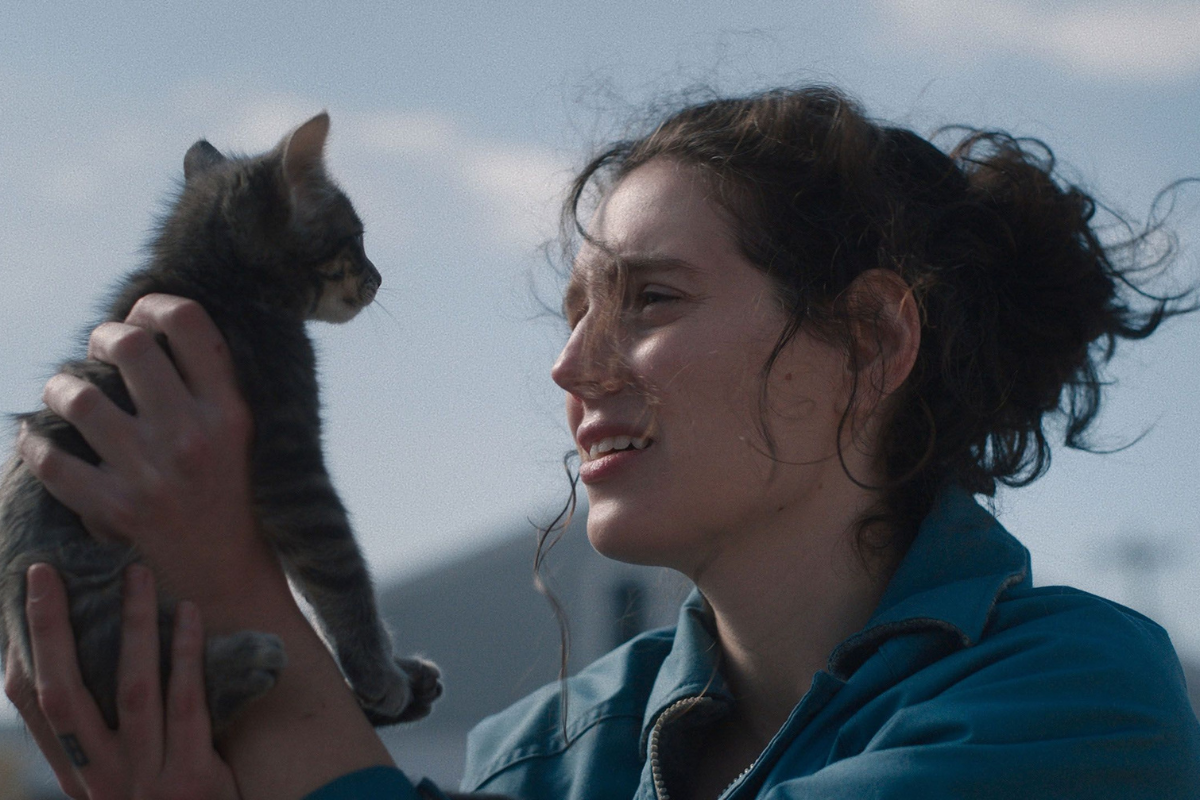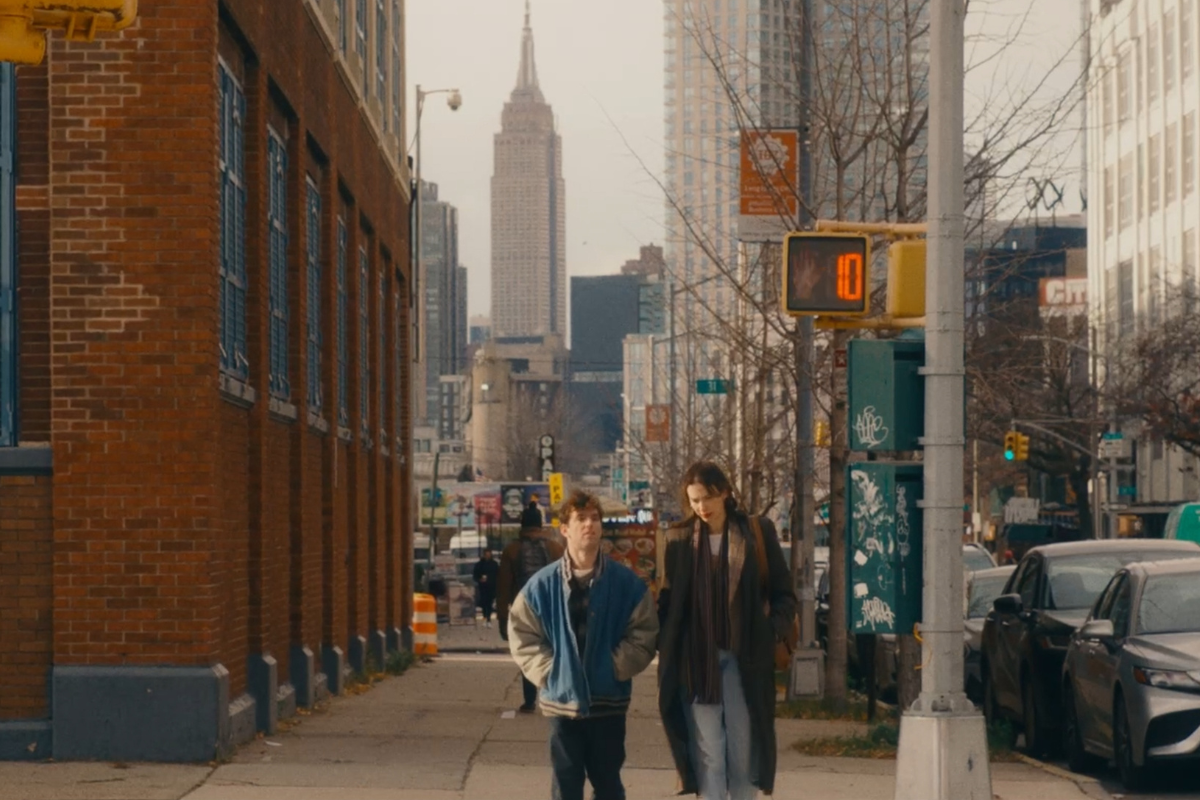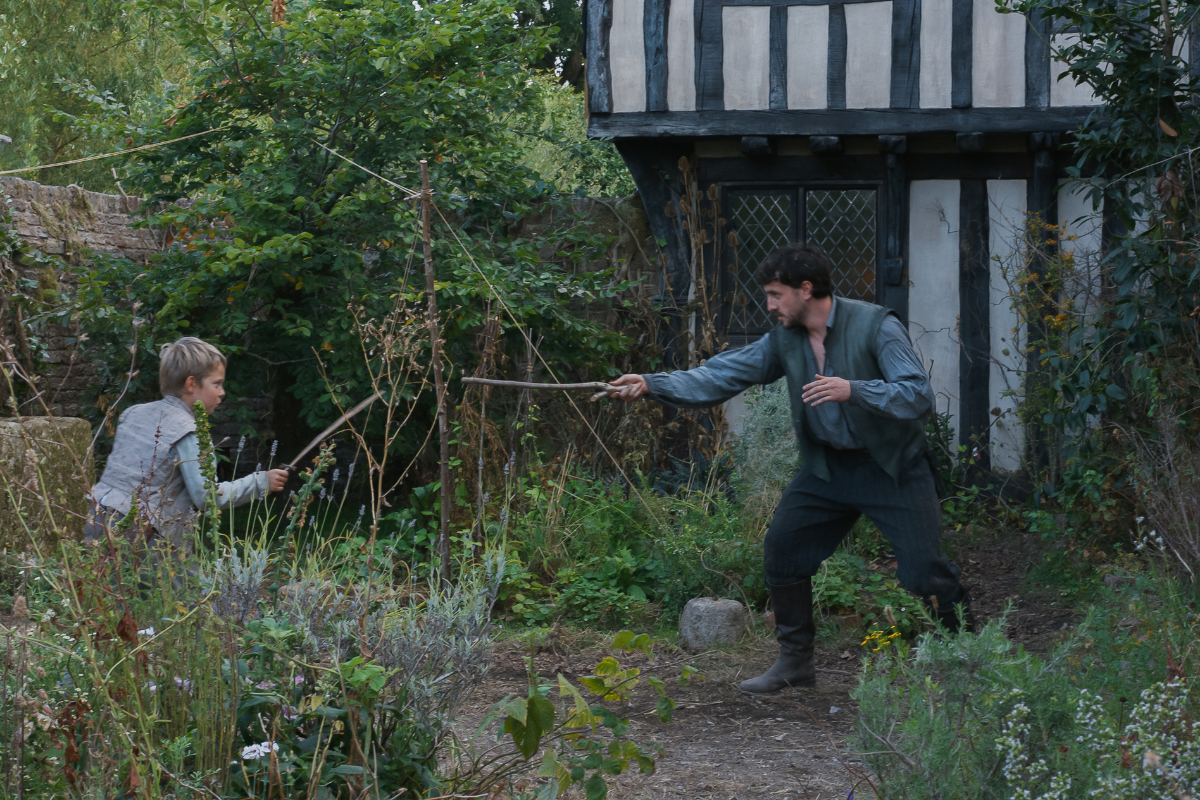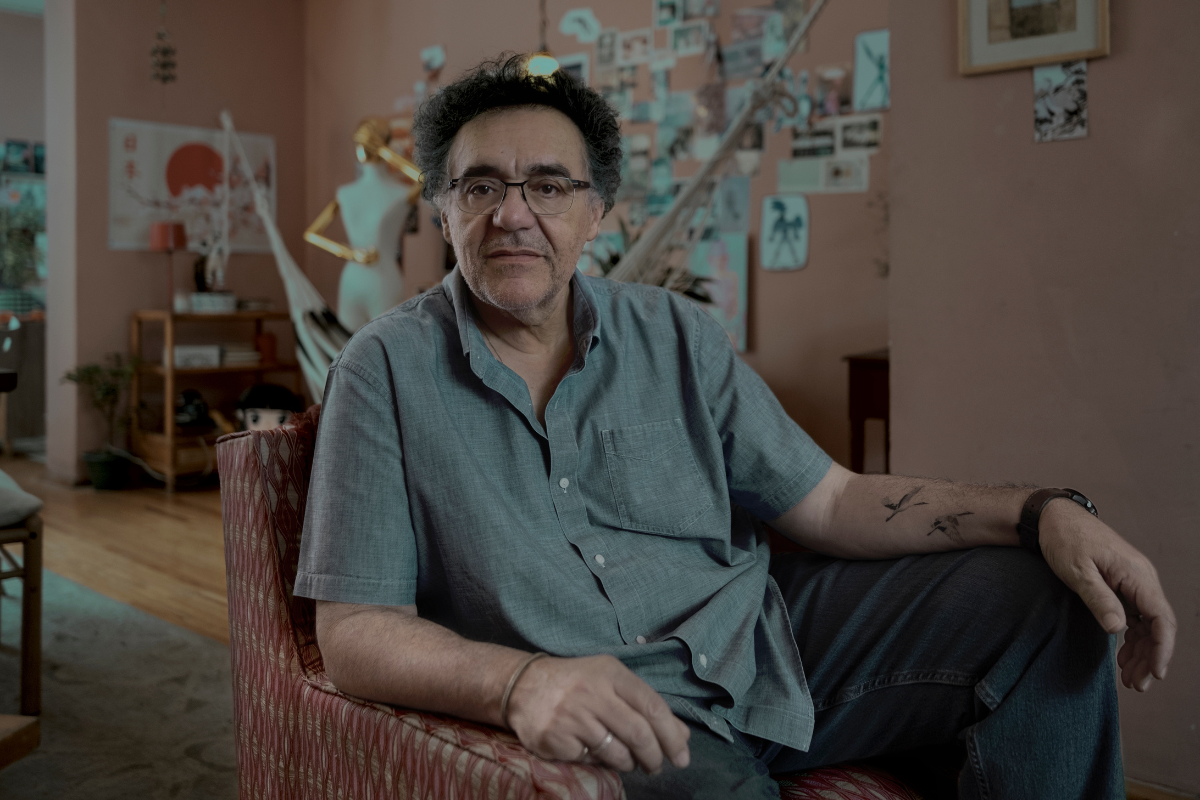Tackling Primal Fear Through Writing: Kiah Roache-Turner Talks Making ‘Beast of War’
Filmmaker Kiah Roache-Turner discusses being inspired by true events, building a life-like shark, making monster movies, and more.
War in and of itself is horror, fueled by primal behavior. What if that theme is combined with primal fear? You have Beast of War, writer/director Kiah Roache-Turner’s (Sting, Wyrmwood) foray into a WWII story inspired by true events that has Australian soldiers stranded in the middle of the Timor Sea. Being eaten by a shark is a primal fear of Roache-Turner’s so he was able to lock into the experience of the young men.
“Anytime I swim out beyond the breaks and I’m treading water and I can’t see the bottom, I just hear the Jaws music in my head. And suddenly I’m swimming back to the beach as fast as I can…! [laughs] I’m not a swimmer, I’m a paddler. I don’t usually like to go out beyond my knees simply because I’m terrified of sharks,” says Roache-Turner.
Shark thrillers are perennial favorites with audiences. Open Water, The Reef, 48 Meters Down, The Shallows, Deep Blue Sea, and Dangerous Animals all have their own spin on the aquatic beast scenario. The grandaddy of them all is Steven Spielberg’s Jaws, the 1975 classic which was the first summer blockbuster. Based on Peter Benchley’s bestselling novel, it became the penultimate movie about what lurks beneath the surface of the seemingly serene and sparkling ocean. This year Jaws celebrates its 50th anniversary and Roache-Turner’s Beast of War comes out in time to add its own exclamation point on the genre.
Roache-Turner recently spoke candidly with Script about shooting a film that was not just about shark attacks but also had emotional heft. He’s always managed to have a team that supports his vision rather than changing it. “Vision is so important. It’s the one thing that makes you original.”
Sonya Alexander: What was the image that inspired this story idea?
Kiah Roache-Turner: It’s a funny one because it wasn’t an image, it was a phone call from my producer a couple of years ago. Blake Northfield called me and asked me if I had anything set on water. And I responded “no.” He said he had access to a tank and asked me to write something set on water. I said that it sounded like a shark film and he responded, “Shark film. Great! I’ll call you in a month.” The inspiration was he had access to a tank…! I didn’t want to embarrass myself in the shadow of Jaws. Then I started thinking about Jaws….the USS Indianapolis speech by Quint. That’s one of the great monologues in film history.
I did a couple of Google dives and found that there is an Australian version of that story, which is a real event. It’s the sinking of the HMAS Armidale by Japanese Zeros in 1942. Hundreds of soldiers were in the ocean. A lot of them got eaten by sharks. It’s a truly brutal and heroic story. I went in a deep dive on that and read a couple of books about it.
The image that stayed with me through researching that real event was this image of a bunch of guys on a raft in the middle of an endless ocean waving up at a plane. There was a photograph taken of these guys. Grainy black and white photography. You can hardly see the guys. They were never seen again. They just floated out into the abyss…they just died or drowned or were eaten by sharks. That image of those guys really locked into my head. It’s really a nightmare image and I wanted to try to live up to the epic tragedy that image conveyed. Obviously, I couldn’t tell that story. It would be disrespectful. So the film is inspired by real events, not based on.
Sonya: Do you have any survival fears and if so, how did that influence the way you approached this?
Kiah: I certainly have a fear of sharks. That’s partially Spielberg’s fault! [laughs] I also grew up in Australia and there’s a lot of great white sharks in Australia and a lot of shark attacks. My father has surfed for the last forty years. He loves the ocean. So I was always in and around beaches. Being afraid of sharks is a primal fear I’ve always had.
Sonya: Did you give the mechanical shark a name?
Kiah: We did..! [laughs] Shazza, which is the Australian version of Sharon. It’s a female because the female sharks are the biggest.
Sonya: Did you have to deal with any real sharks?
Kiah: Oh, God no. I’m not shooting on the ocean, Sonya, no way! [laughs]
Sonya: [laughs] I understand! How long did it take to build the shark?
Kiah: About four and a half months. The shark pieces were very difficult to construct. We had a giant puppet head that you put a stunt diver in and he operates the jaws himself. It was very easy to operate. We had the fin, which was attached to a huge submersible submarine type thing that could go down or come up. That thing weighed half a ton. We had to tow that around in the tank to create the fin moving around. It was important to do that. If you just put a fin on a safety diver, you don’t get that huge wake of waves on either side of the fin that mentally shows the audience that under that fin is a creature that weighs the same as a bus. It’s very important to have that water displacement psychologically for the viewer.
Then we had a giant attack head that operated on rails underneath the water. It would rush through the water and then explode up out of the water, with these animatronic jaws munching towards the performers. We also had to build the tank. There was no indoor tank big enough in Australia to deal with the vision that we had for this so we had to build a giant 40 meter water tank. To do that on an indie budget was quite difficult but we got there because we had such an amazing crew.
Sonya: What were the challenges of shooting using the tank as opposed to on open water?
Kiah: It’s night and day. With the ocean, you’ve got currents, rain, storms. We would have had to do a lot of shooting at night. Shooting on the open ocean at night is something you don’t want to do, from a safety perspective. Also, there are real sharks out there and they hunt at night. The great thing about a tank is that it’s a controlled environment and you can be very safety conscious. Anytime there’s an issue, you can turn the lights on. We have safety divers standing on the edge, ready to jump in and help someone. We made sure to cast people who were strong swimmers.
The hard part about shooting indoors in a tank is that it can look like you’re shooting indoors in a tank. Visually, we had to work out a hyperstylized approach and have the fog a constant so we could put those beautiful colored lights through the fog to make sure that every scene has a different look and feel and color palette. Because effectively you’re dealing with a film that’s eighty minutes of seven guys trapped together on a piece of wood. We made sure to make it visually dynamic.
Sonya: War films are already horror in themselves. Was there a challenge in combining two types of horror?
Kiah: I’ve always liked to combine genres or subgenres. My first film Wyrmwood was a zombie film but effectively I’m combining the aesthetic of a post-apocalyptic film like Mad Max with the zombie genre. This one I wanted to be Band of Brothers meets Jaws. Combining genres is really fun because you’re riding on two cross purposes. It was a little easier for me to connect into the emotionality of war because my grandfather died in WWII in the Pacific. I had his letters and real research into a real event that happened. I felt very emotionally connected to these young guys. I grew up with brothers and I went to an all boys school so I know what ‘boys in trouble’ feels like. It was very easy for me to write emotionally in that context. War is inherently dynamic. You’re dealing with life and death and bravery and cowardice. It’s a fertile ground for drama.
I’ve spent the last ten years of my life making monster movies so I’m getting reasonably good at it. [laughs] I hope I know how to do a monster movie by now…! [laughs] Combining those two genres was something that was quite fun in terms of writing. One of the tricks with a monster movie is that it can’t just be a monster. There has to be an emotional connection. We worked in the idea that our lead Leo, played brilliantly by Mark Coles Smith, one of the most talented actors in this country, is an indigenous man who fishes off the coast of Broome in Western Australia. A lot of great white sharks out there. His backstory is that he’s out fishing with his brother and his brother is taken by a shark. So the shark that pops up in WWII and starts killing his friends is also a shark in his mind. There’s the metaphorical shark he’s dealing with, the demon shark, and also the real shark in front of him.
Sonya: Which character in the story did you feel most connected to?
Kiah: Probably Joel [Nankervis] playing Will, the seventeen-year-old, because he’s a guy who’s just scared. Honestly, I don’t know how I’d be in war. I might be able to be heroic, but I’m more likely to be crying in a corner. [laughs]
Sonya: What are the main themes of this story?
Kiah: Mateship. Australia is big on that. There’s a connection that mates have historically that goes even deeper than family sometimes. The more positive aspects of masculinity are conveyed which I feel can be defined by mateship, where you form a bond with other men and it’s very strong. Certainly that bond is a thousand times stronger when life and death are a part of the equation. Two mates come together and they become brothers. They protect each other. In the end, they’re prepared to give their lives for each other. It’s a very Australian thing and a sacred thing for our culture.
Sonya: What was your most gruelling day on the set?
Kiah: There’s a sequence I call, “the floor is lava,” where Leo has to hop towards bits of debris without going in the water. That was a confluence of production design. We had to make debris that was floatable and could hold the weight of people. The lighting was quite difficult. That stuntwork had to be done by Mark, who does all of his own stunts. Halfway through, spoiler alert, he gets attacked by a shark. The shark has to burst out of the water and fall onto the debris so that Mark is hanging onto the debris nearly sliding into the jaws of the shark. It was logistically very difficult to shoot. And we shot that in pieces throughout the five weeks we had in the tank. That was the one I knew also would be a flagship moment so I didn’t want to stuff that up as a director. It’s probably the most important set piece in the film.
Beast of War, a Well Go USA Entertainment release, will be in Theaters and on Digital October 10.
Sonya Alexander started off her career training to be a talent agent. She eventually realized she was meant to be on the creative end and has been writing ever since. As a freelance writer she’s written screenplays, covered film, television, music and video games and done academic writing. She’s also been a script reader for over twenty years. She's a member of the African American Film Critics Association and currently resides in Los Angeles.


